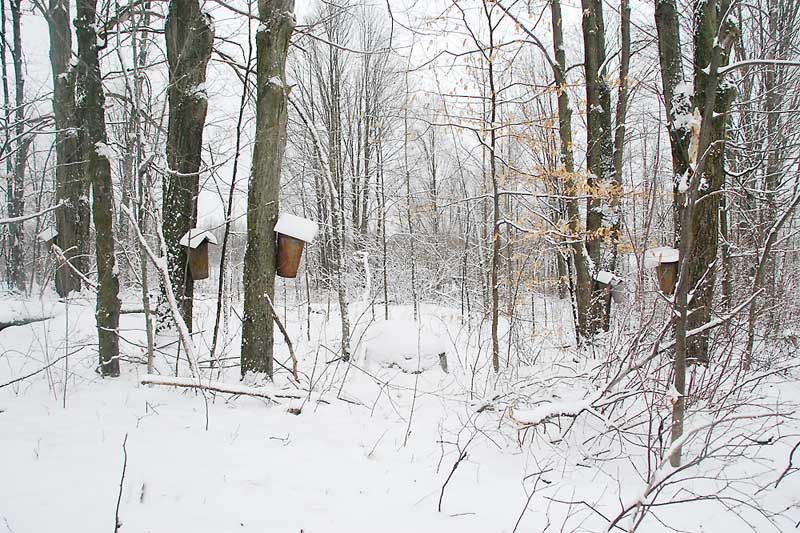Jeff Green | Mar 21, 2013
This time of year when I walk through the woods I am always looking for maple trees. I know most of the maples around our property by now, and certainly the sweet trees from years gone by - the ones that run when others don't; the ones that are 3/4 full when others are just getting started.
Maples are about 50 years old when they reach 10" in diameter and can be tapped, and many of the trees we tap are 150 years old or more. Trees take a longer view of things than humans.
Maples run when the weather is right, and why they run better in some years than other is debated, but no one seems to have definitive answer. The important thing for sugar producers, from the smallest scale hobbyist to the largest operators, is that we don't control the run.
As far as syrup goes, I'll say this about all the syrup producers, large and small, that I know of in Ontario, and probably Quebec and Vermont as well. Whether they tap 10,000 or 10 trees, use reverse osmosis machines, freeze the sap, use the fanciest evaporator or boil it over an open fire, the addition of technology does not alter the final product. The most industrial processes do not add any preservatives, additives, or anything else to the final product. When it says Pure Maple Syrup on a label, that's what it is. All a producer can do, whatever sophistication they bring to their operation, is retrieve sap and concentrate the sugar to 97% and put it in a container. The sap provides everything that is needed for a very long shelf life and an easily transported final product.
If there was something that is a gift from nature, the sweet water is just that. The basic idea that the subtle sweetness of late winter/early spring maple sap can be concentrated goes back a long way, to the indigenous roots of this broad region. The method of turning that sap into a locally produced sugar for year round use was a gift offered by the indigenous peoples to everyone who has come here since, and the sap itself is a gift from the trees, which were here first.
Depending on one's religious bent, that first day of late winter, when our instincts start to tell us that the sap will soon be running, can be a sign of many things. To me, it says that the land and the seasons have their own power, and while we run around organizing ourselves in so many ways, cutting the land into pieces, arguing about who owns it, who should own it, what the boundaries mean, who can dig where, who can build what and where, who can cut down this tree or that, harvest which fish or deer or moose, the land itself will carry on. It will recover from whatever we do to it, in time.
Our forests were cut down less than 200 years ago, an act of environmental devastation more complete than anything we would ever consider now, with the possible exception of some mining practices. The forest has not recovered just yet, but it will, in time.
Someday, maybe someday soon, the sugar maple will move to the north to keep up with a changing climate, just as we hear that camels moved from Ellesmere Island to the Saharan desert so many millions of years ago, but the trees will survive, and the sugar water will run even if there is no one left who has the desire or need or capacity to draw off some to make into sugar.
So while we spend a lot of time considering all of our conflicts, out joys and tragedies alike, it is certainly nice to contemplate the first true sign of the spring of the year, when the temperature rises, and the sun comes up earlier and stays up longer, and the sap is ready to run.
More Stories
- Latest CUPW Job Action Stops Postal Delivery Of The Frontenac News Forcing Alternate Plans
- Opponents of Barbers Lake Gravel Pit Pack Ag Hall in McDonalds Corners
- Bobsleigh Olympian Jay Dearborn At Mikes Pizza In Sydenham
- The Loins Club Of and O'Lakes Roar
- North Frontenac Back Roads Studio Tour - September 27 and 28
- Sunday Market Vendors Give Back
- George Street Work As Town Hall Renovation Nears Completion
- One Way Street Plan Hits A Dead End - Central Frontenac Council, September 9
- Global Gardening
- No Winner Yet in Catch The Ace But Fundraising Target Met

